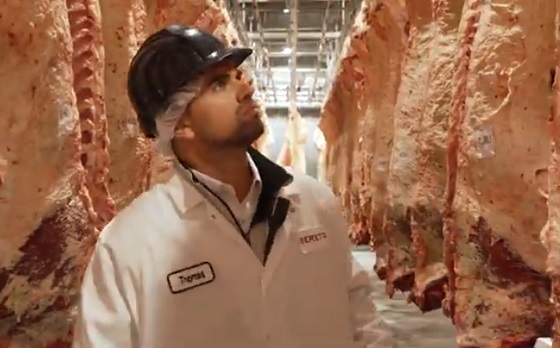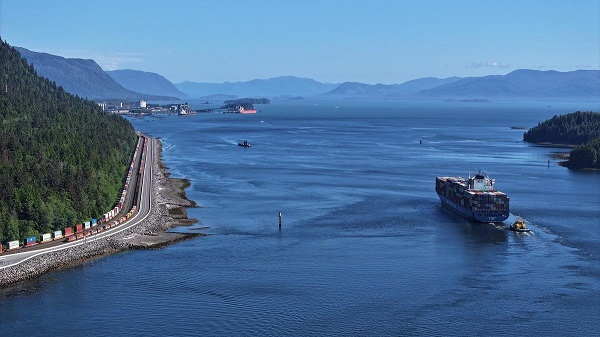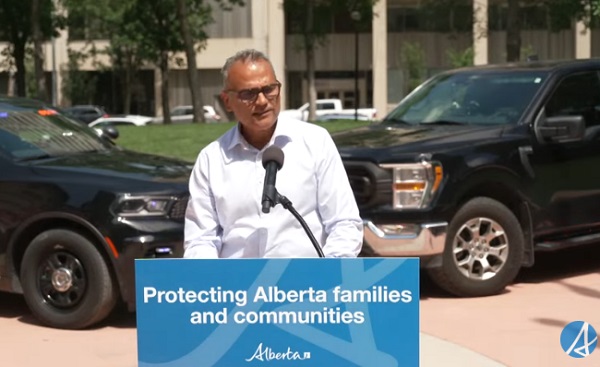Alberta
Team sports and group dance not yet approved. Restaurants open with restrictions. – Details on health measures easing February 8

From the Province of Alberta
More health measures will ease on Feb. 8
Additional health measures will be eased for restaurants, indoor fitness and some children’s activities, effective Feb. 8.
Step 1 of Alberta’s four-step framework to ease restrictions is based on a COVID-19 hospitalization benchmark of 600, including intensive care patients. This benchmark was reached on Jan. 28.
The full, four-step framework for easing restrictions can be viewed here.
“Albertans have done a great job of bringing our numbers down from our peak in December. We aren’t out of the woods yet, but there are opportunities where we can safely ease restrictions while also protecting our health-care system. This first step is a cautious one, and it will bring relief to many Albertans and Alberta businesses.”
“We are able to ease restrictions on Feb. 8 thanks to the efforts of Albertans. We need to stick to a stepped approach so we don’t risk the steady improvements we’ve made. Although restrictions will remain in place, the path forward gives us all more options in our daily lives.”
Indoor and outdoor children’s sport and performance
- Children’s sport and performance activities are permitted if they are related to school activities, such as physical education classes.
- This will allow K-12 schools and post-secondary institutions to use off-site facilities to support curriculum-related educational activities.
Indoor fitness
- Only one-on-one training is permitted for indoor fitness activities (e.g. fitness in dance studios, training figure skating on ice, one-on-one lessons).
- One-on-one sessions cannot interact with others and there must be a minimum of three metres distance between sessions in the same facility.
- Sessions have to be scheduled or by appointment.
- No drop-in for individuals or groups is allowed.
- No sports games, competitions, team practice, league play or group exercise of any kind.
- Trainers must be professional, certified and/or paid trainers who are providing active instruction and correction. Passive supervision of a physical activity is not considered training.
- Trainers should remain masked during the session; clients are not required to wear a mask while exercising.
- More than one trainer and client ‘pair’ are allowed into the facility, studio, rink, court, pool, ice surface, etc., as long as:
- Each trainer and client stays three metres away from all other trainers and clients at all times, including in entryways and exits.
- Each trainer only interacts with their assigned client, and each client only interacts with their assigned trainer.
- No interaction between clients or between trainers is allowed.
- No ‘cycling through’ multiple trainers, as in circuit training.
Restaurants, cafes and pubs
- Restaurants, cafes and pubs must collect the contact information of one person from the dining party.
- Up to a maximum of six people per table; individuals must be from same household or the two close contacts for people living alone.
- Liquor service ends at 10 p.m.
- In-person dining must close by 11 p.m.
- No entertainment allowed (e.g., no VLTs, pool tables, live music, etc.)
Alberta’s government is responding to the COVID-19 pandemic by protecting lives and livelihoods with precise measures to bend the curve, sustain small businesses and protect Alberta’s health-care system.
Agriculture
Lacombe meat processor scores $1.2 million dollar provincial tax credit to help expansion

Alberta’s government continues to attract investment and grow the provincial economy.
The province’s inviting and tax-friendly business environment, and abundant agricultural resources, make it one of North America’s best places to do business. In addition, the Agri-Processing Investment Tax Credit helps attract investment that will further diversify Alberta’s agriculture industry.
Beretta Farms is the most recent company to qualify for the tax credit by expanding its existing facility with the potential to significantly increase production capacity. It invested more than $10.9 million in the project that is expected to increase the plant’s processing capacity from 29,583 to 44,688 head of cattle per year. Eleven new employees were hired after the expansion and the company plans to hire ten more. Through the Agri-Processing Investment Tax Credit, Alberta’s government has issued Beretta Farms a tax credit of $1,228,735.
“The Agri-Processing Investment Tax Credit is building on Alberta’s existing competitive advantages for agri-food companies and the primary producers that supply them. This facility expansion will allow Beretta Farms to increase production capacity, which means more Alberta beef across the country, and around the world.”
“This expansion by Beretta Farms is great news for Lacombe and central Alberta. It not only supports local job creation and economic growth but also strengthens Alberta’s global reputation for producing high-quality meat products. I’m proud to see our government supporting agricultural innovation and investment right here in our community.”
The tax credit provides a 12 per cent non-refundable, non-transferable tax credit when businesses invest $10 million or more in a project to build or expand a value-added agri-processing facility in Alberta. The program is open to any food manufacturers and bio processors that add value to commodities like grains or meat or turn agricultural byproducts into new consumer or industrial goods.
Beretta Farms’ facility in Lacombe is a federally registered, European Union-approved harvesting and meat processing facility specializing in the slaughter, processing, packaging and distribution of Canadian and United States cattle and bison meat products to 87 countries worldwide.
“Our recent plant expansion project at our facility in Lacombe has allowed us to increase our processing capacities and add more job opportunities in the central Alberta area. With the support and recognition from the Government of Alberta’s tax credit program, we feel we are in a better position to continue our success and have the confidence to grow our meat brands into the future.”
Alberta’s agri-processing sector is the second-largest manufacturing industry in the province and meat processing plays an important role in the sector, generating millions in annual economic impact and creating thousands of jobs. Alberta continues to be an attractive place for agricultural investment due to its agricultural resources, one of the lowest tax rates in North America, a business-friendly environment and a robust transportation network to connect with international markets.
Quick facts
- Since 2023, there are 16 applicants to the Agri-Processing Investment Tax Credit for projects worth about $1.6 billion total in new investment in Alberta’s agri-processing sector.
- To date, 13 projects have received conditional approval under the program.
- Each applicant must submit progress reports, then apply for a tax credit certificate when the project is complete.
- Beretta Farms has expanded the Lacombe facility by 10,000 square feet to include new warehousing, cooler space and an office building.
- This project has the potential to increase production capacity by 50 per cent, thereby facilitating entry into more European markets.
Related information
Alberta
Alberta Next: Alberta Pension Plan

From Premier Danielle Smith and Alberta.ca/Next
Let’s talk about an Alberta Pension Plan for a minute.
With our young Alberta workforce paying billions more into the CPP each year than our seniors get back in benefits, it’s time to ask whether we stay with the status quo or create our own Alberta Pension Plan that would guarantee as good or better benefits for seniors and lower premiums for workers.
I want to hear your perspective on this idea and please check out the video. Get the facts. Join the conversation.
Visit Alberta.ca/next
-

 Energy1 day ago
Energy1 day agoB.C. Residents File Competition Bureau Complaint Against David Suzuki Foundation for Use of False Imagery in Anti-Energy Campaigns
-

 Alberta2 days ago
Alberta2 days agoAlberta uncorks new rules for liquor and cannabis
-

 COVID-191 day ago
COVID-191 day agoCourt compels RCMP and TD Bank to hand over records related to freezing of peaceful protestor’s bank accounts
-

 Crime2 days ago
Crime2 days agoProject Sleeping Giant: Inside the Chinese Mercantile Machine Linking Beijing’s Underground Banks and the Sinaloa Cartel
-

 C2C Journal23 hours ago
C2C Journal23 hours agoCanada Desperately Needs a Baby Bump
-

 International1 day ago
International1 day agoTrump transportation secretary tells governors to remove ‘rainbow crosswalks’
-

 Alberta1 day ago
Alberta1 day agoAlberta Next: Alberta Pension Plan
-

 Agriculture10 hours ago
Agriculture10 hours agoLacombe meat processor scores $1.2 million dollar provincial tax credit to help expansion



